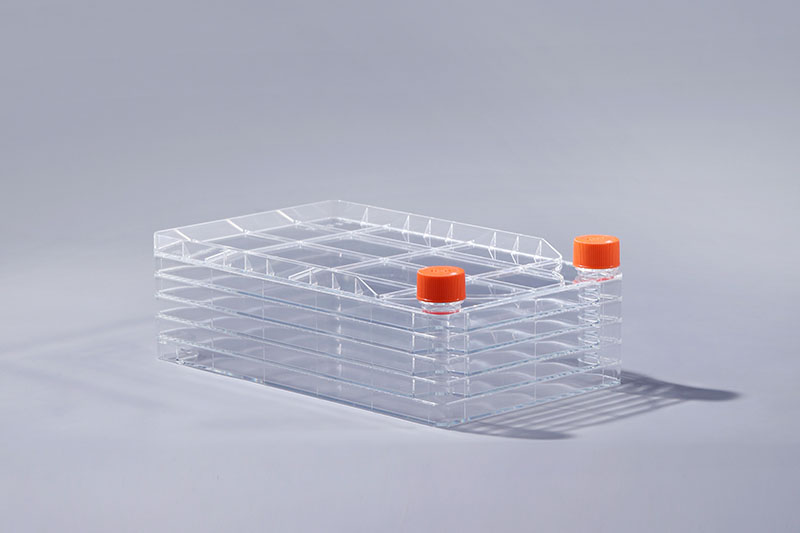Cell factories occupy an important position in large-scale cell culture, mainly used in pharmaceuticals, vaccine production, cell therapy and other fields. Cells are more sensitive to the production environment, so the requirements for consumables are also relatively high. Biological detection is a very important basic detection, mainly including the following items:
Cytotoxicity test: Pure cell-killing events caused by cells or chemicals that do not rely on apoptosis or necrosis as cell death mechanisms. Through this test, it can be judged whether the raw materials of the cell factory contain substances that are not conducive to cell growth.
Sensitization test: chemical sensitizers act on the body through various ways, and can make immune cells in the body produce specific immune responses to them. damage, showing obvious symptoms and signs. Through this test, it can be judged whether the test substance is an allergen and the sensitization intensity.
Hemolysis test: Hemolysis test is a method for screening and identification of bacteria specified in the national standard. Commonly used in the identification of Streptococcus, Vibrio, Diphtheria, etc. Many bacteria can produce hemolysin, which can hemolyze the plate, so a hemolytic ring will appear around these bacteria.
Systemic toxicity testing: The starting point of systemic toxicity testing is to consider the potential adverse effects of the product or its material leaching during use of the medical device. Because these extracts may cause harm to tissues or organs that are not in direct contact with the product through the absorption, distribution and metabolism of the human body.
In addition, the biological test also includes intradermal stimulation test and intradermal reaction test. These test items are all to ensure that the cell factory does not contain substances that affect cell growth, so as to ensure the normal proliferation of cells.
The FAI climbed 5.9 percent year-on-year in the first 11 months of 2018, quickening from the 5.7-percent growth in Jan-Oct, the National Bureau of Statistics (NBS) said Friday in an online statement.
The key indicator of investment, dubbed a major growth driver, hit the bottom in August and has since started to rebound steadily.
In the face of emerging economic challenges home and abroad, China has stepped up efforts to stabilize investment, in particular rolling out measures to motivate private investors and channel funds into infrastructure.
Friday's data showed private investment, accounting for more than 60 percent of the total FAI, expanded by a brisk 8.7 percent.
NBS spokesperson Mao Shengyong said funds into weak economic links registered rapid increases as investment in environmental protection and agriculture jumped 42 percent and 12.5 percent respectively, much faster than the average.
In breakdown, investment in high-tech and equipment manufacturing remained vigorous with 16.1-percent and 11.6-percent increases respectively in the first 11 months. Infrastructure investment gained 3.7 percent, staying flat. Investment in property development rose 9.7 percent, also unchanged.
 English
English



















































